Abstract
1. Seven solitary subjects, and two groups of four, spent from 5 to 13 days in an isolation unit without knowledge of time. Three solitary subjects and one group of four adopted fairly regular activity habits with a period of 25-27 h; one subject adopted a period of 30 h, and one of 27 h initially, decreasing to 24-25 h after a few days. One group of four awoke roughly every 24 h, after a sleep which was alternately about 8 h, or about 4 h and believed by the subjects to be an afternoon siesta. Two solitary subjects alternated sleeps of about 8 or 16 h, separated by 24 h of activity.
2. Deep temperature in all subjects oscillated with a period of 24-26 h, which was thus commonly distinct from their activity habits.
3. Urinary potassium followed a rhythm whose period, though usually close to, was sometimes distinct from, that of temperature. A secondary period corresponding to that of activity was also sometimes present.
4. Urinary sodium and chloride usually gave evidence of two periodic components, one corresponding to activity and the other to the rhythm of either temperature or of urinary potassium.
5. Urinary creatinine and phosphate usually followed the subject's routine of activity.
6. Plasma samples were collected on a few occasions and analysed for phosphate and 11-hydroxycorticosteroids. Changes in plasma phosphate were usually, but not always, associated with similar changes in urinary phosphate, and changes in plasma corticosteroids were often, but not always, associated with similar changes in urinary potassium shortly afterwards.
7. Observations are recorded on a subject alone in a cave for 127 days. His activity habits, though wildly variable, gave evidence of a period of 25·1 h and his urinary electrolyte excretion indicated a shorter period, of 24·6 h. During the following 3 days, when he remained in the cave but was visited frequently, his plasma corticosteroids and urinary potassium oscillated with a period of 16 h.
8. The possible mechanisms controlling these rhythms are discussed.
Full text
PDF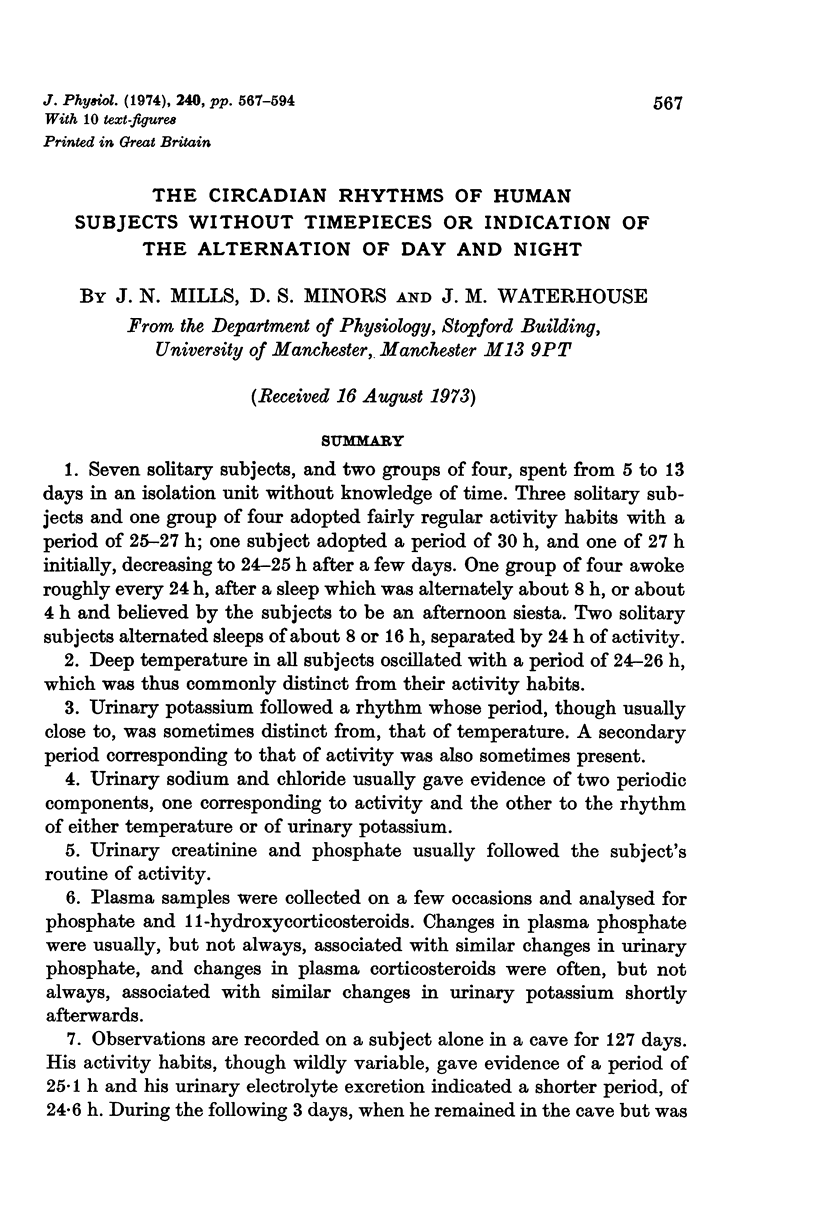

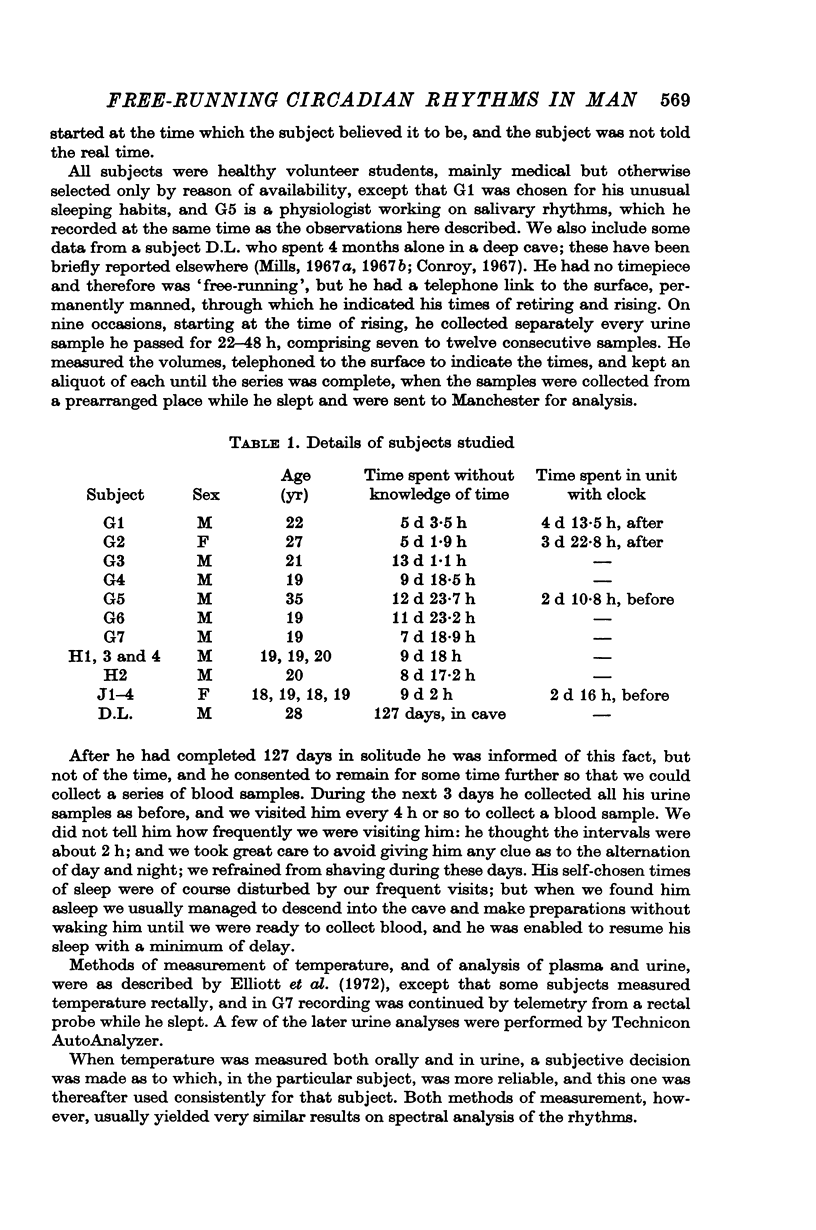
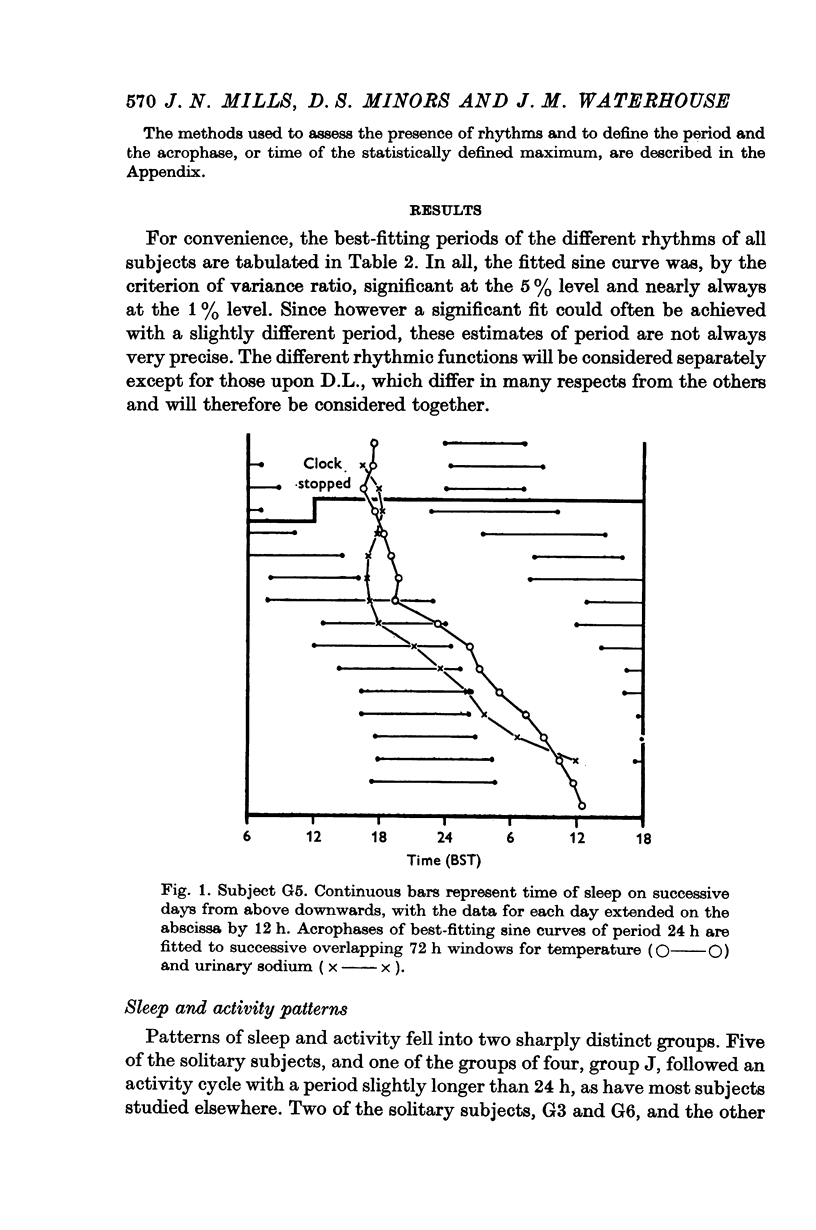
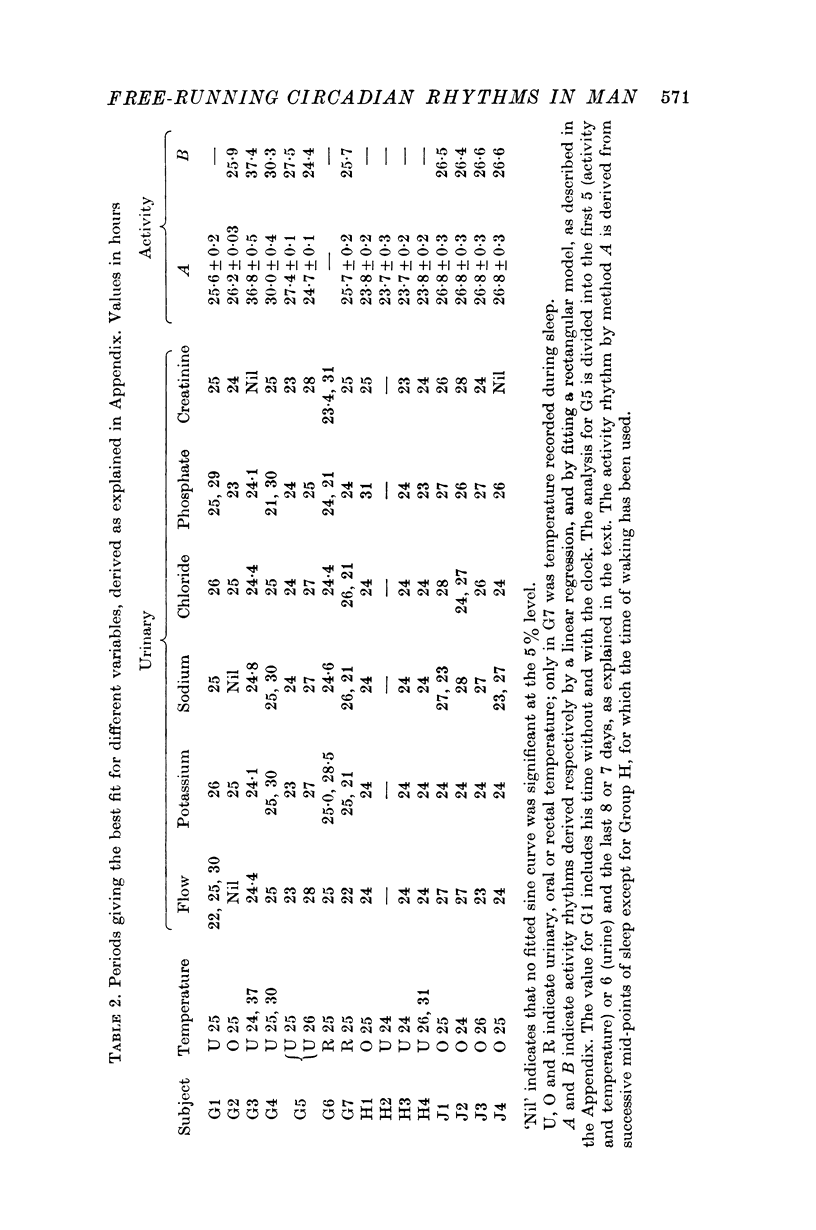
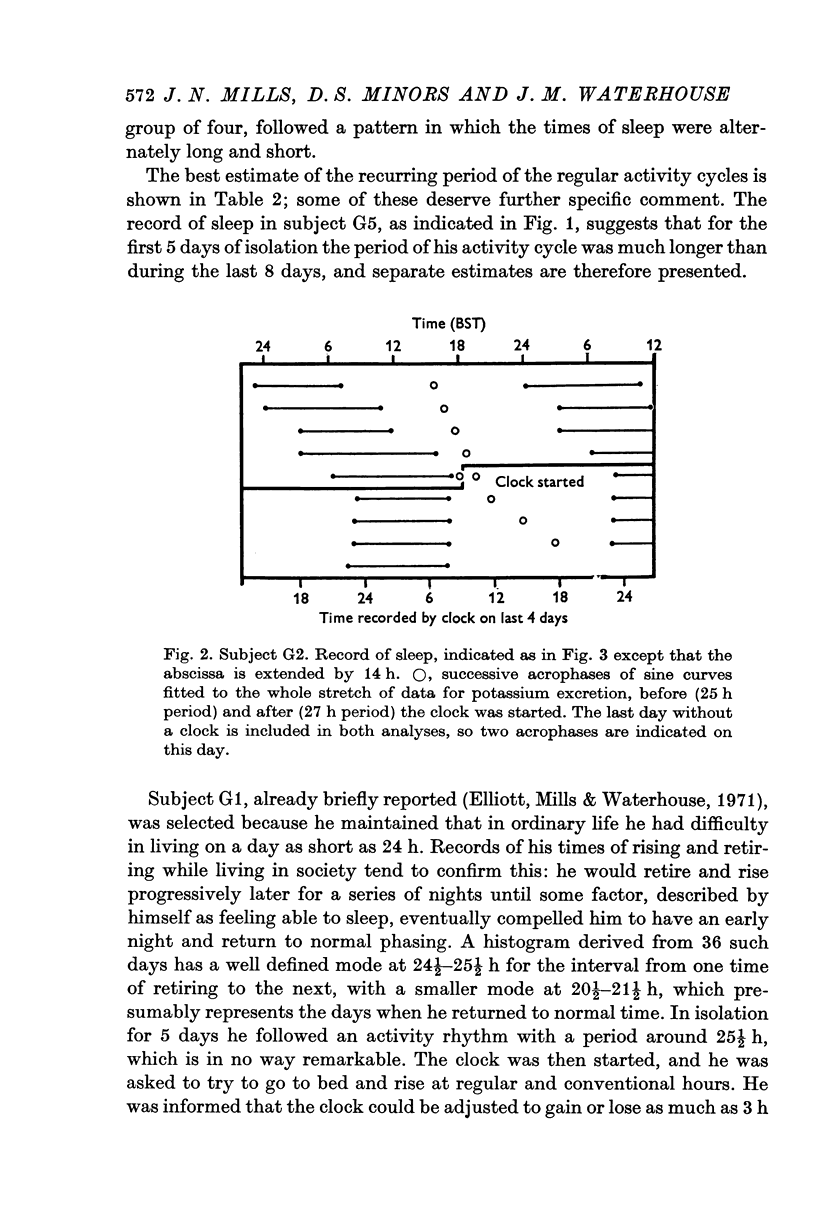
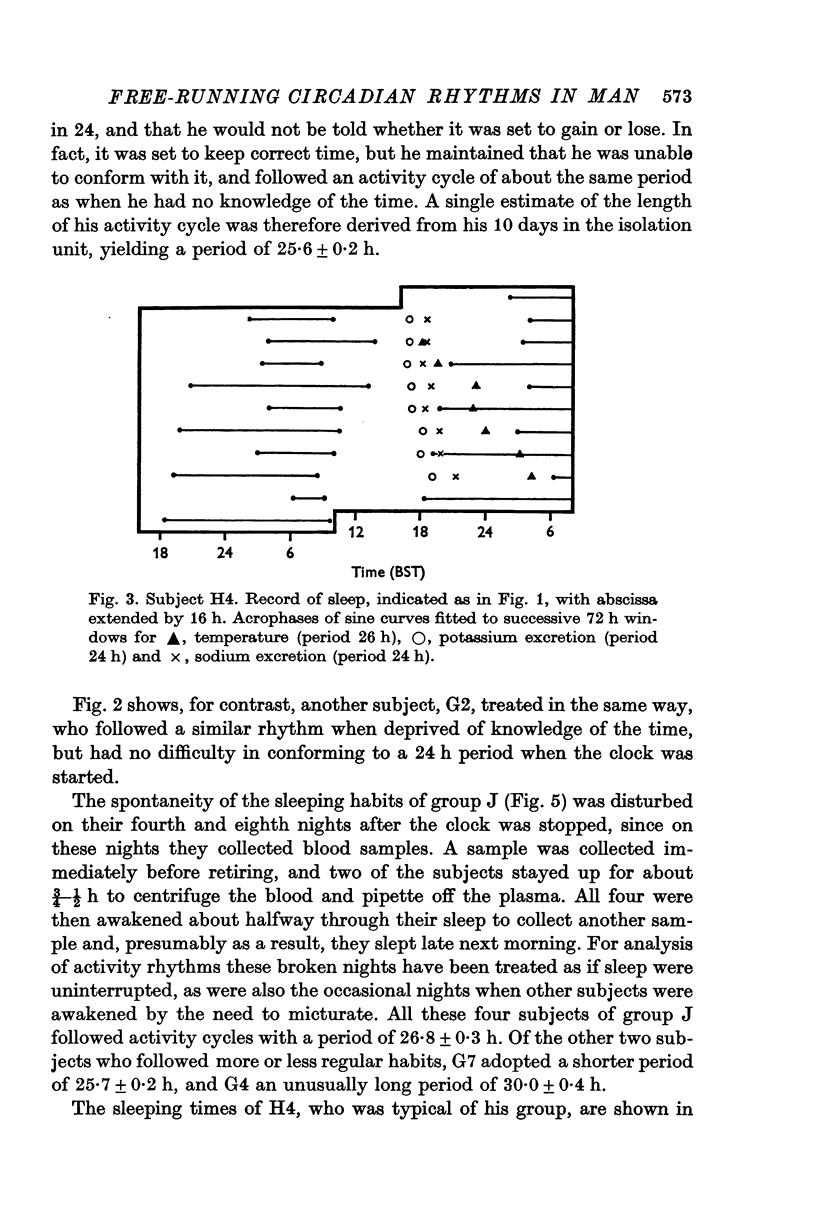
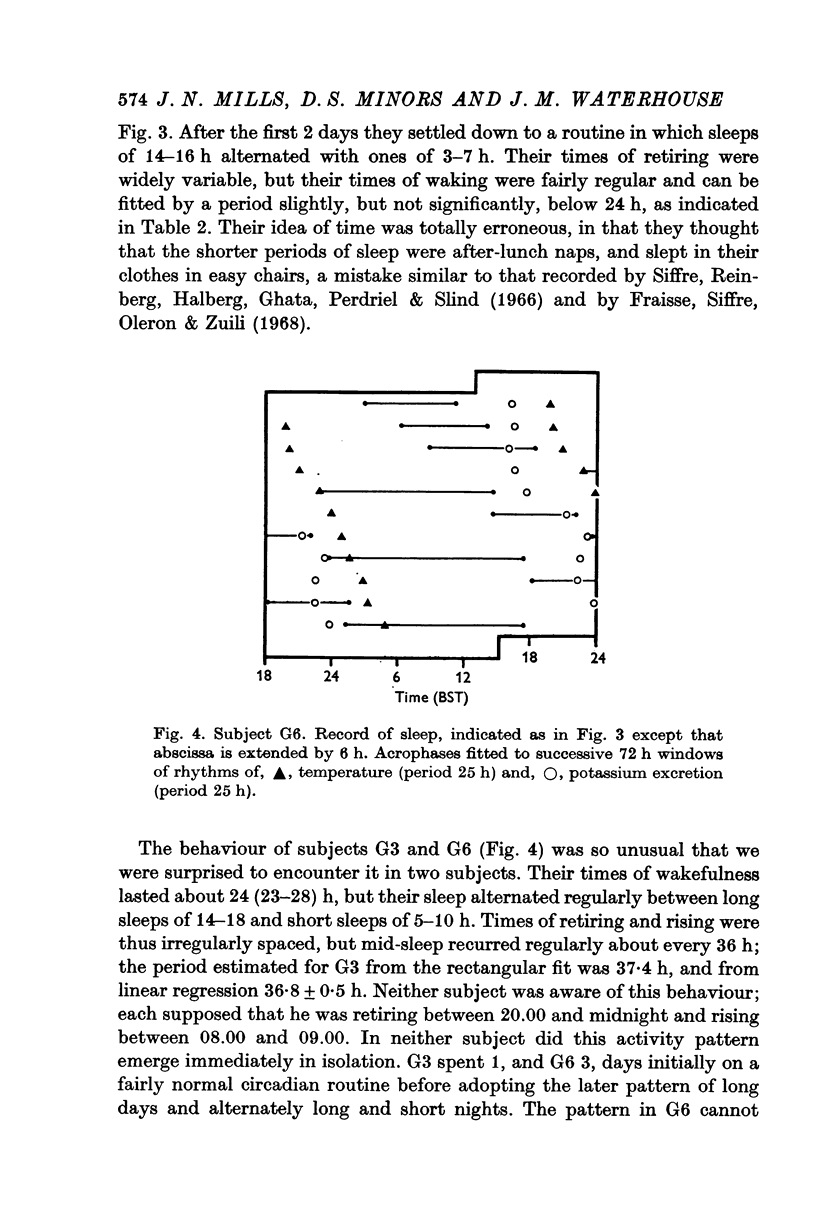
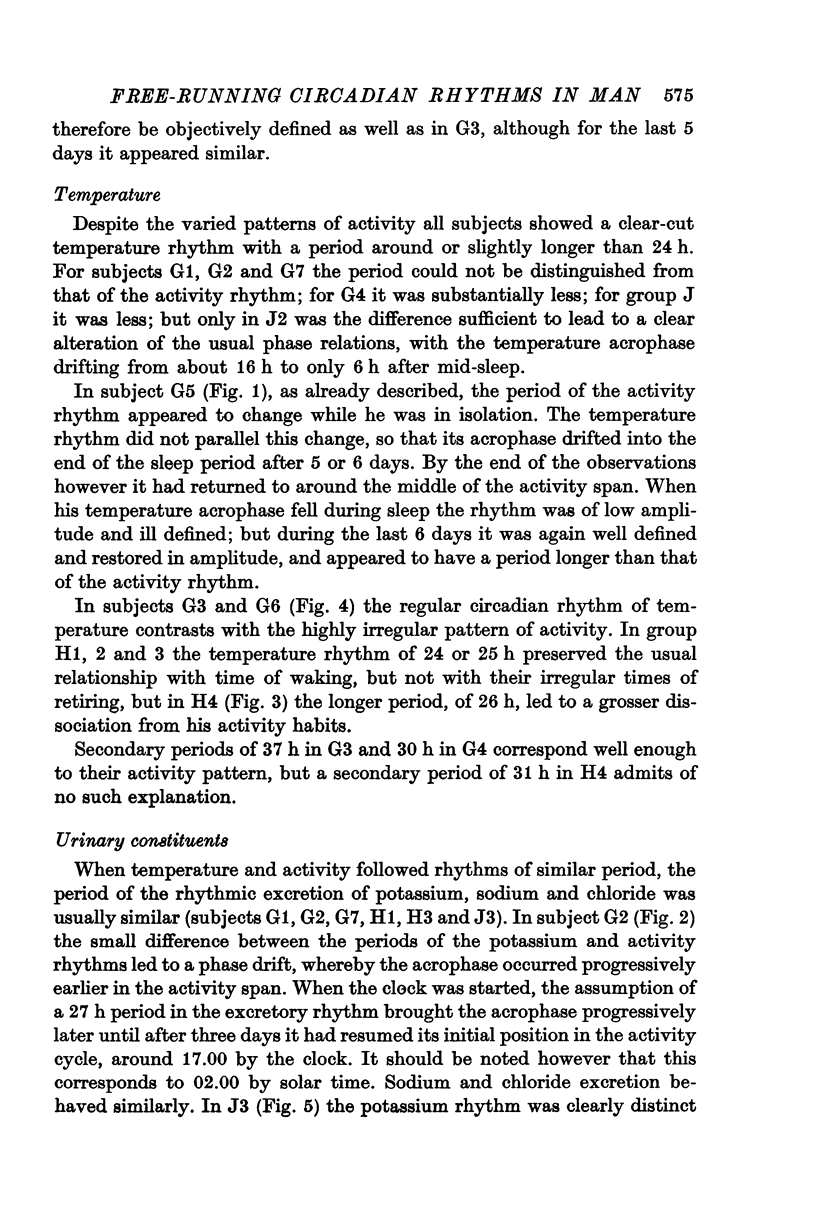
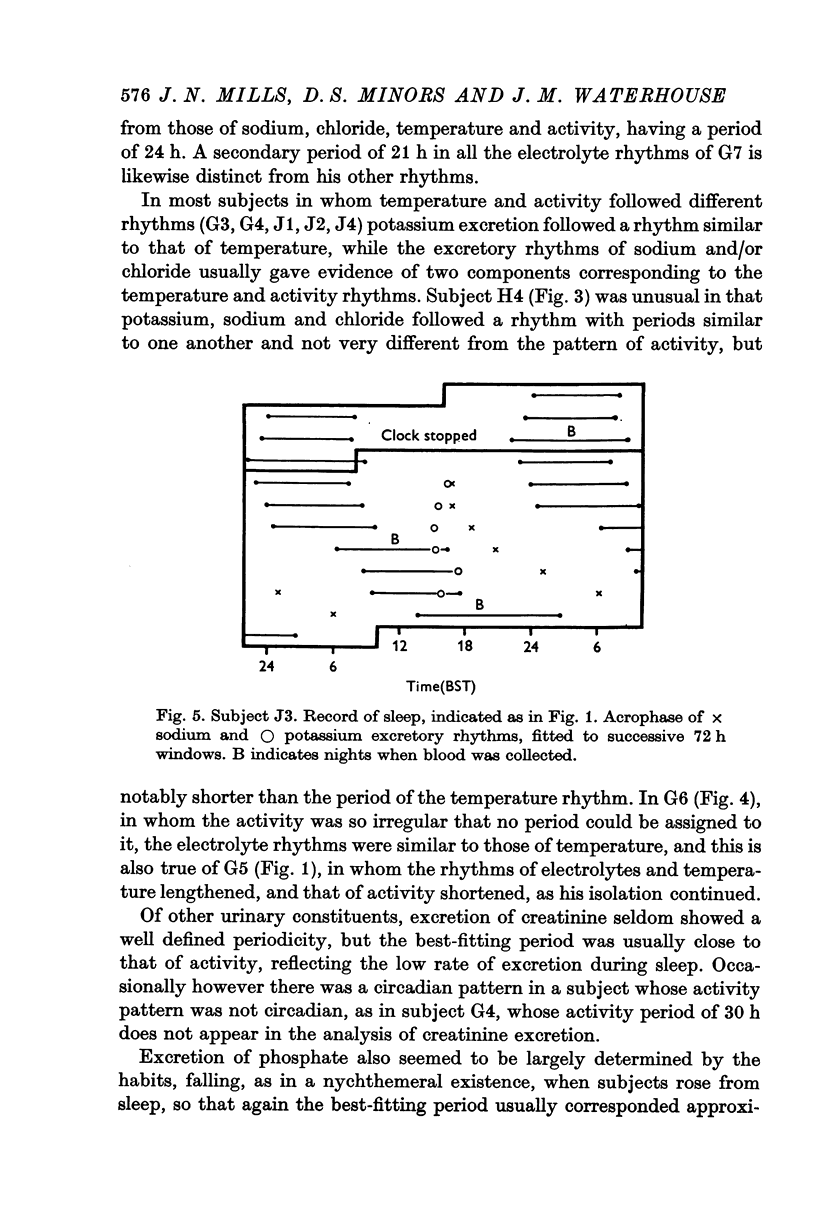
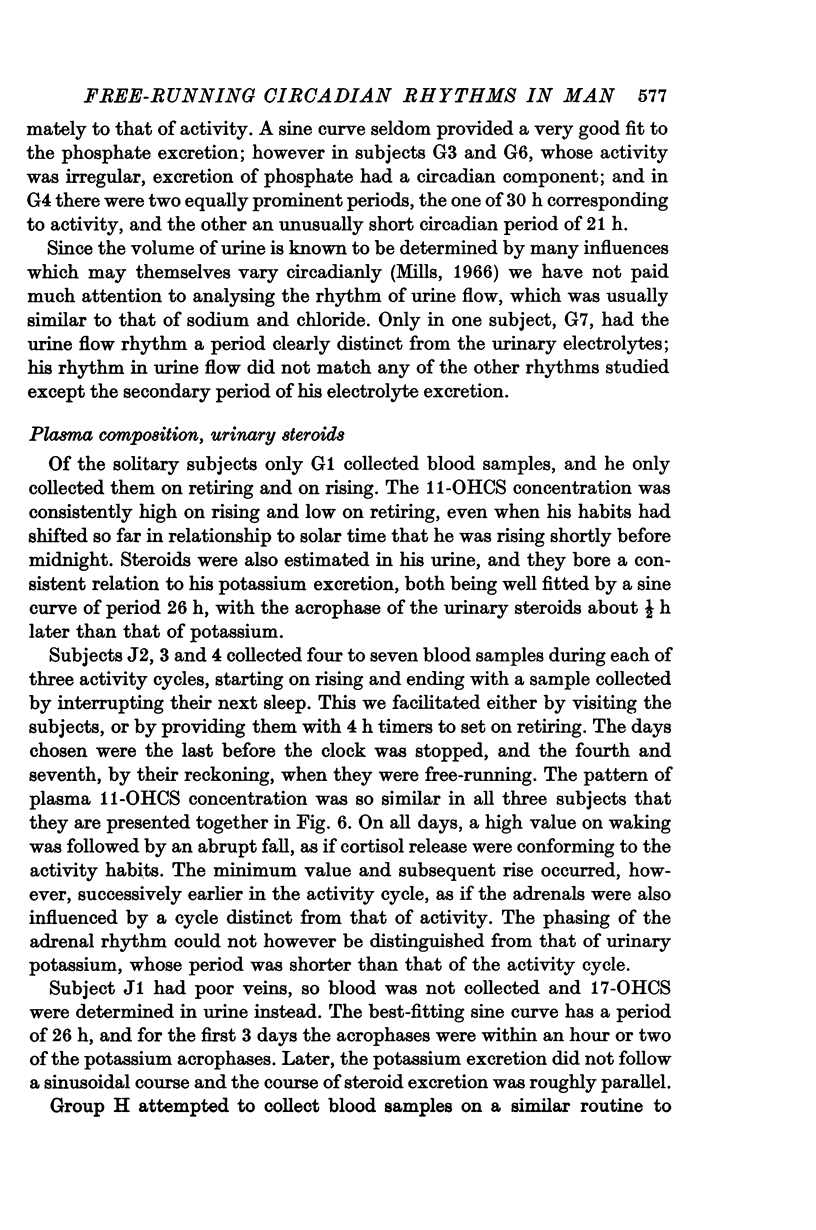
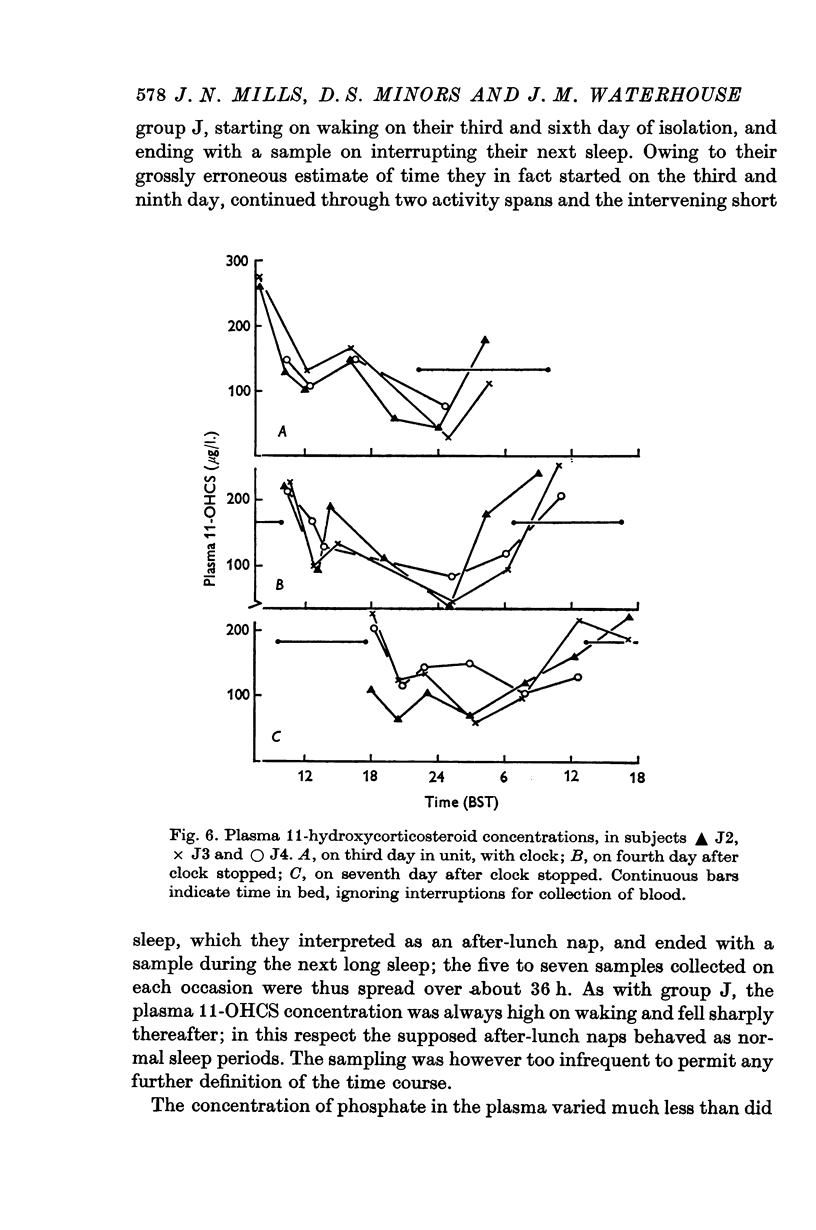
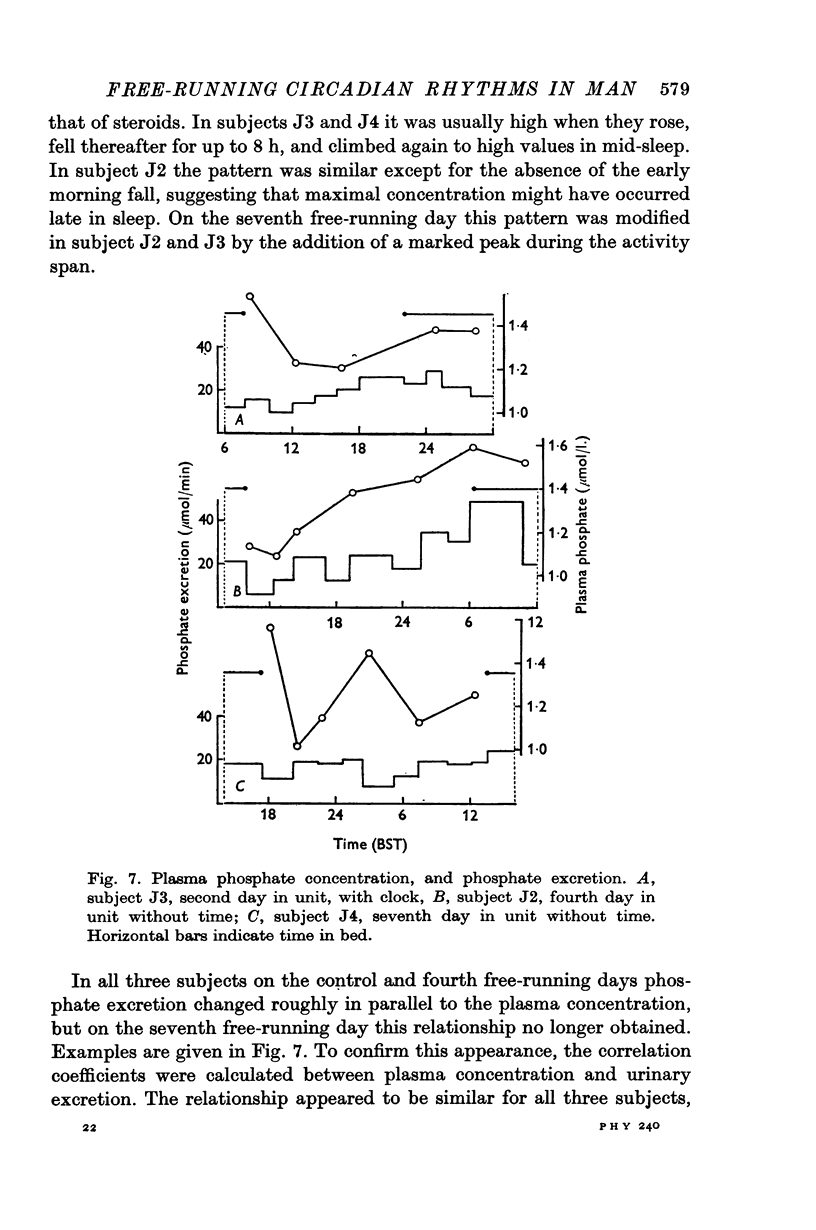
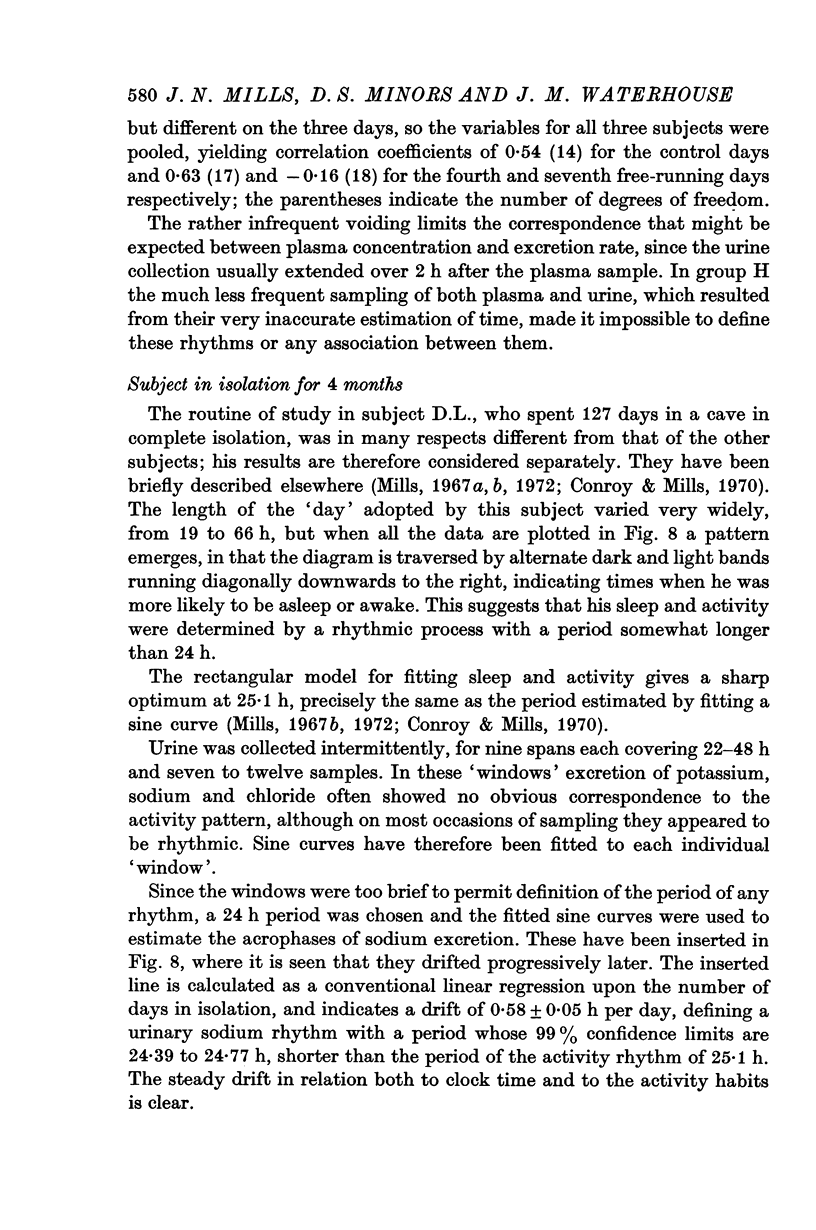
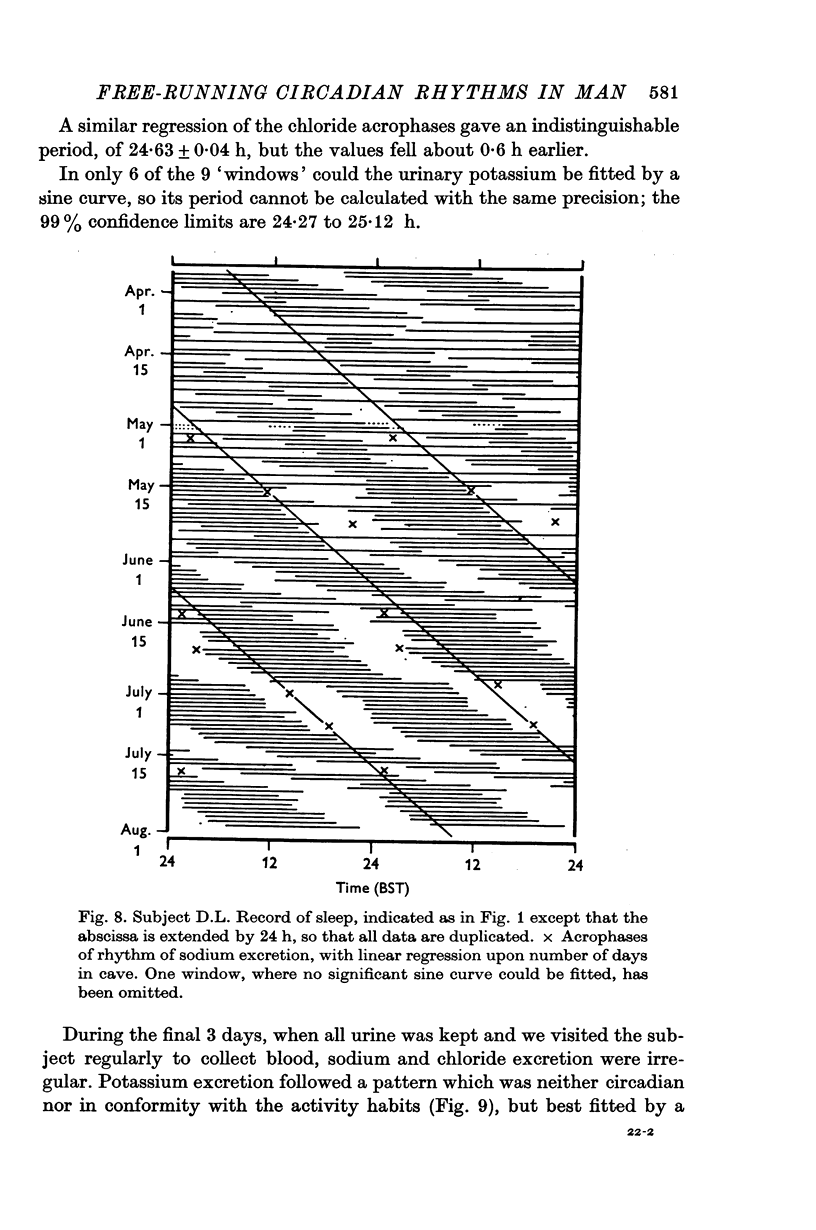
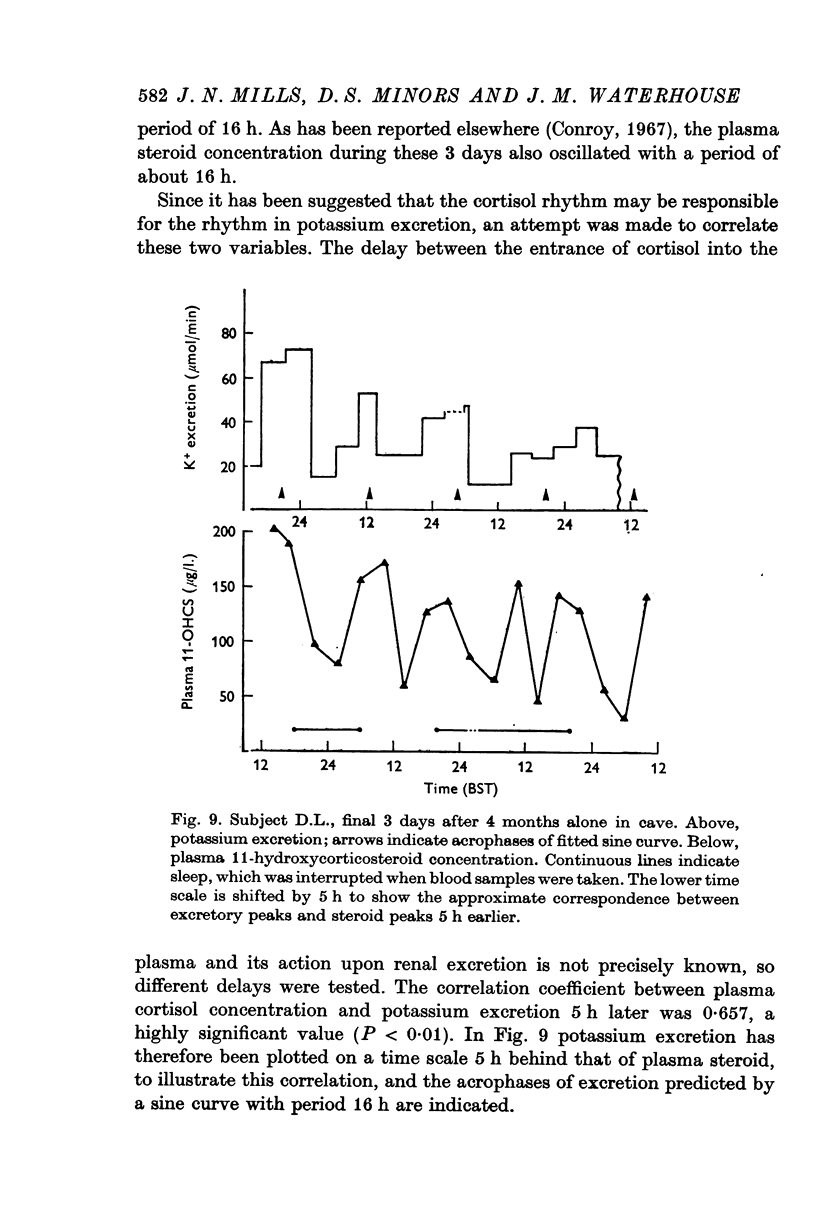
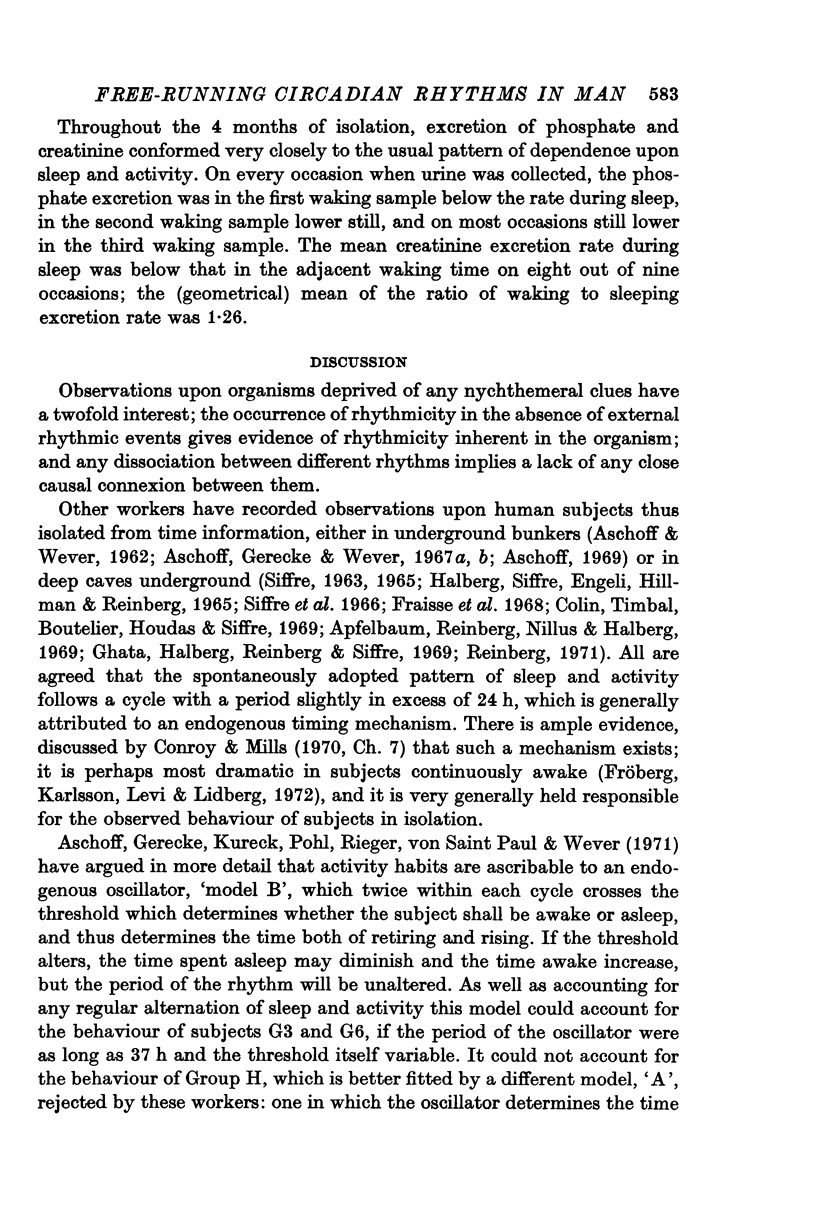
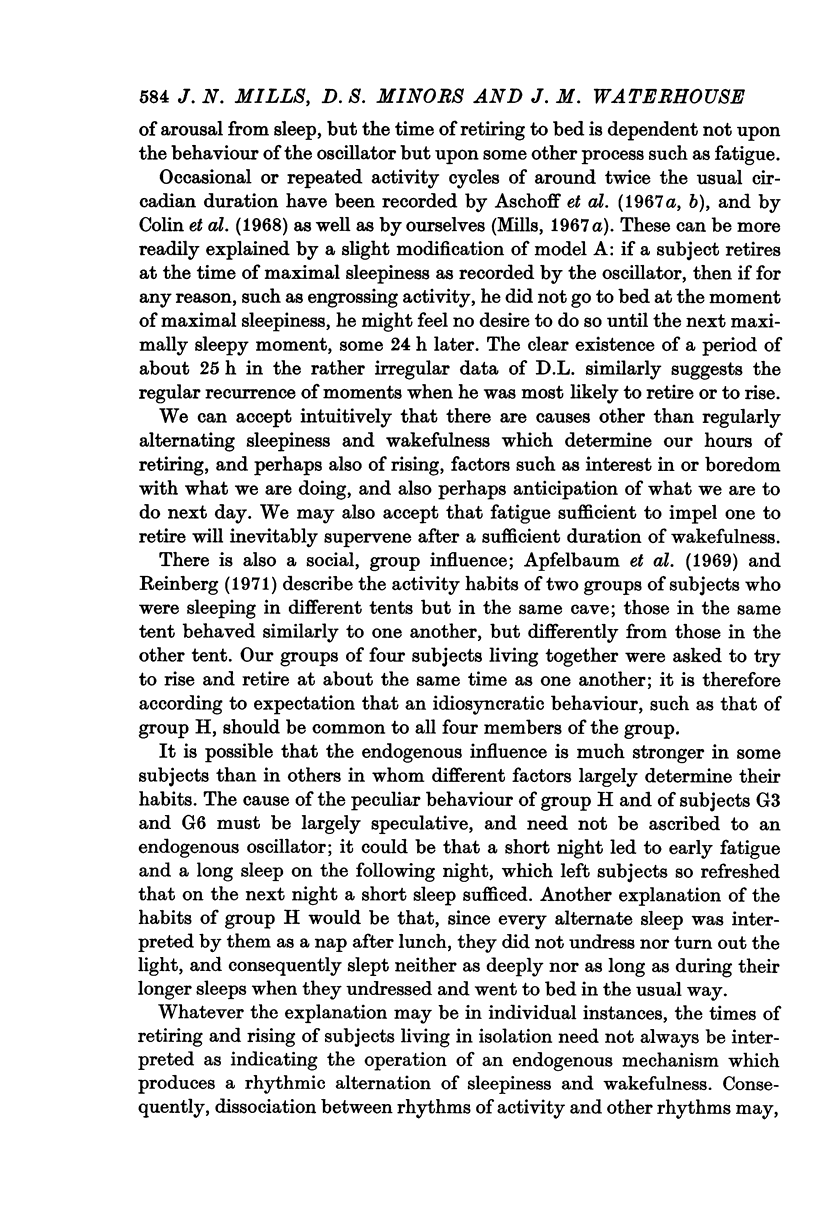

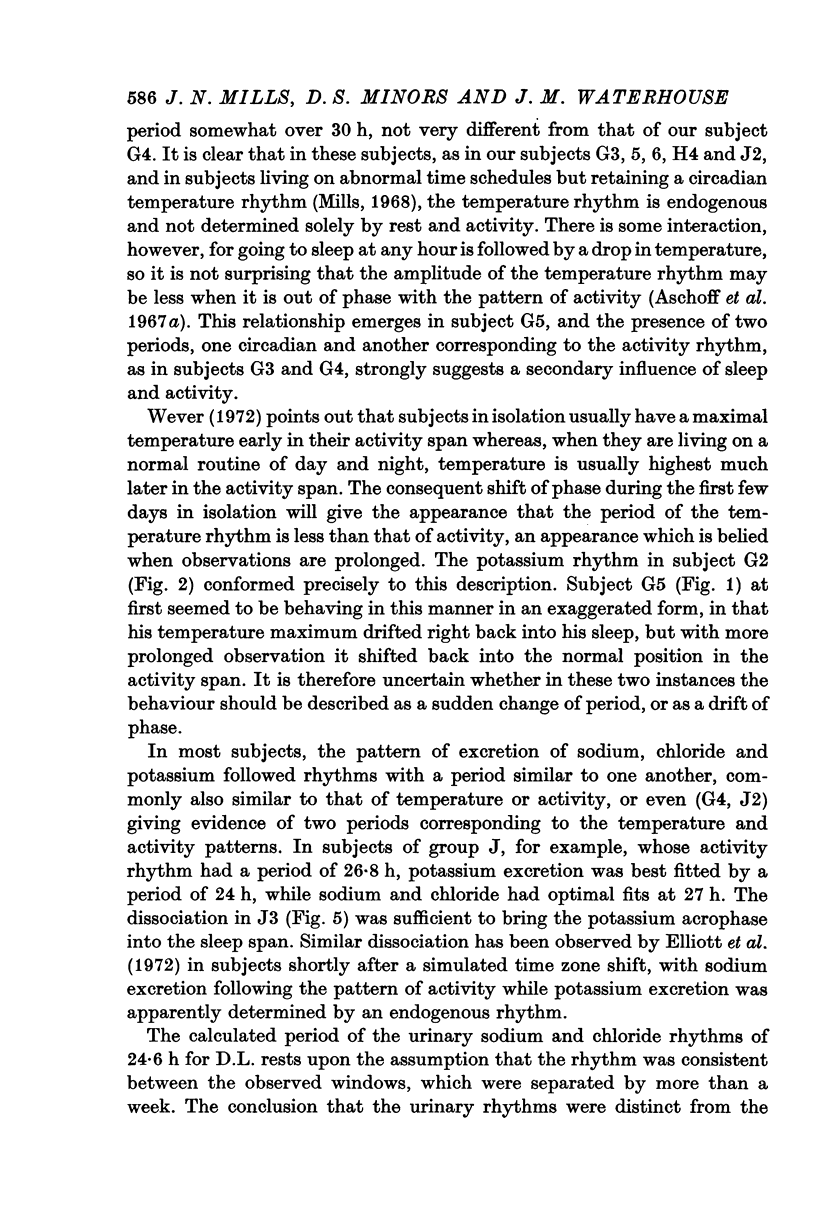
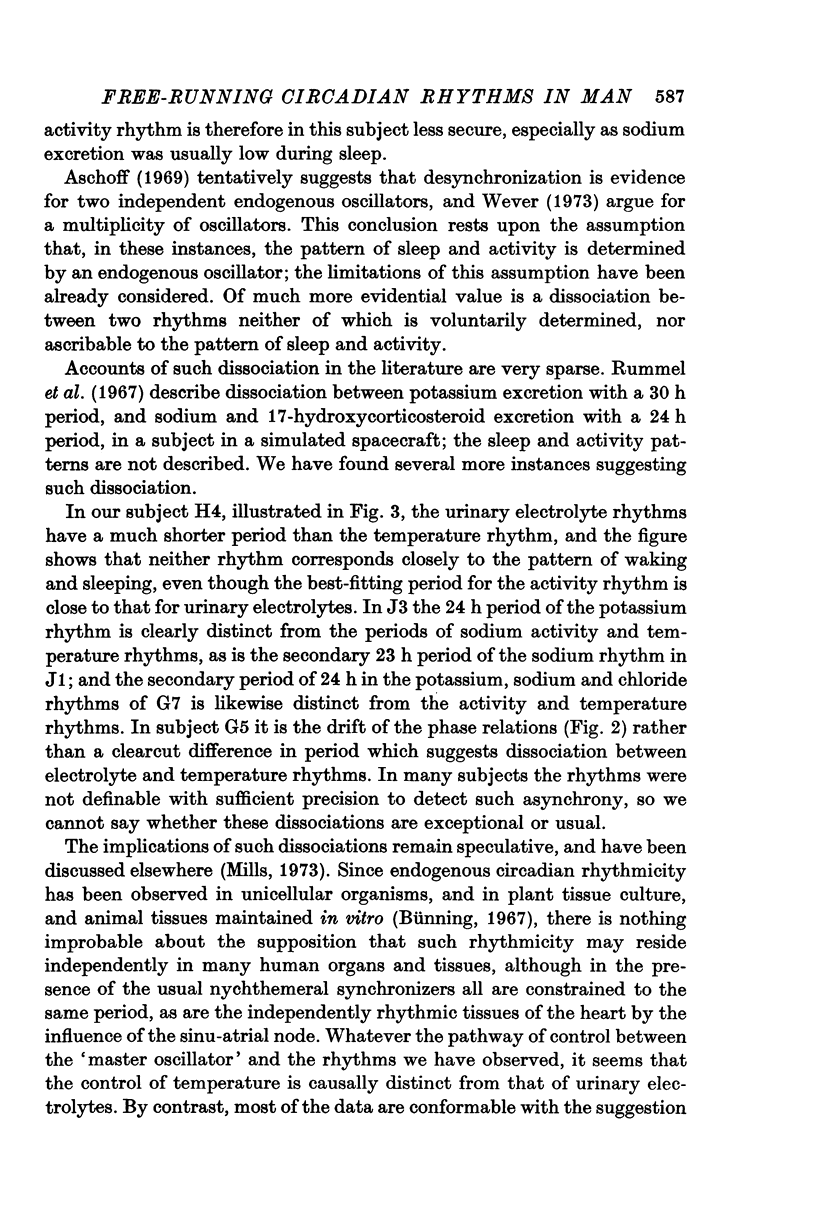
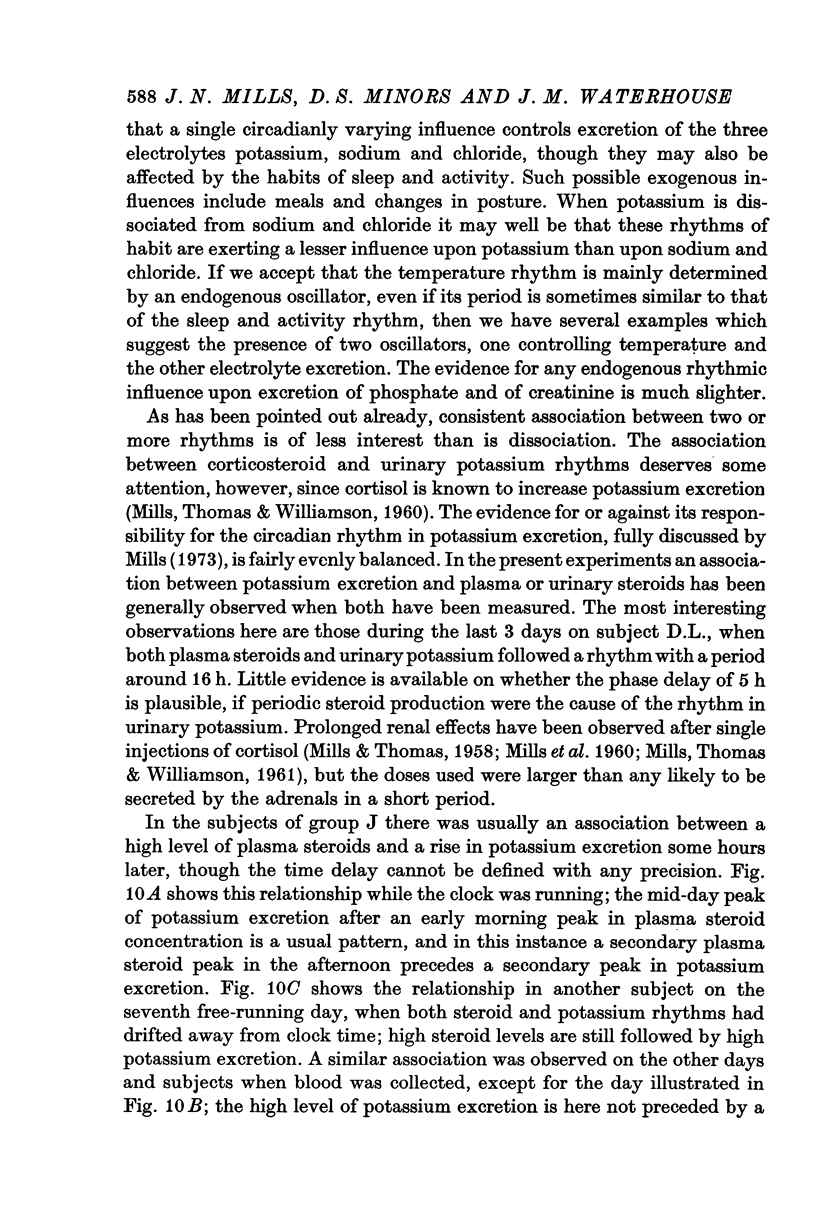
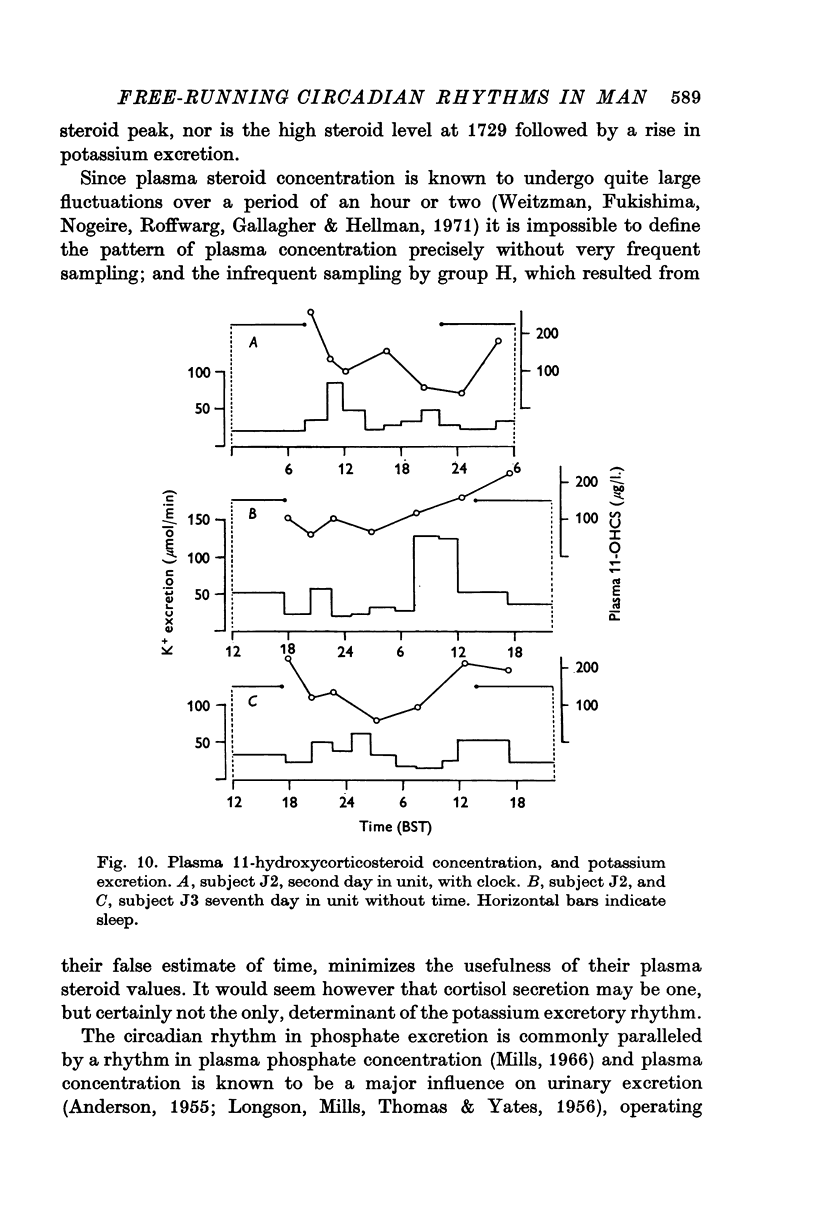
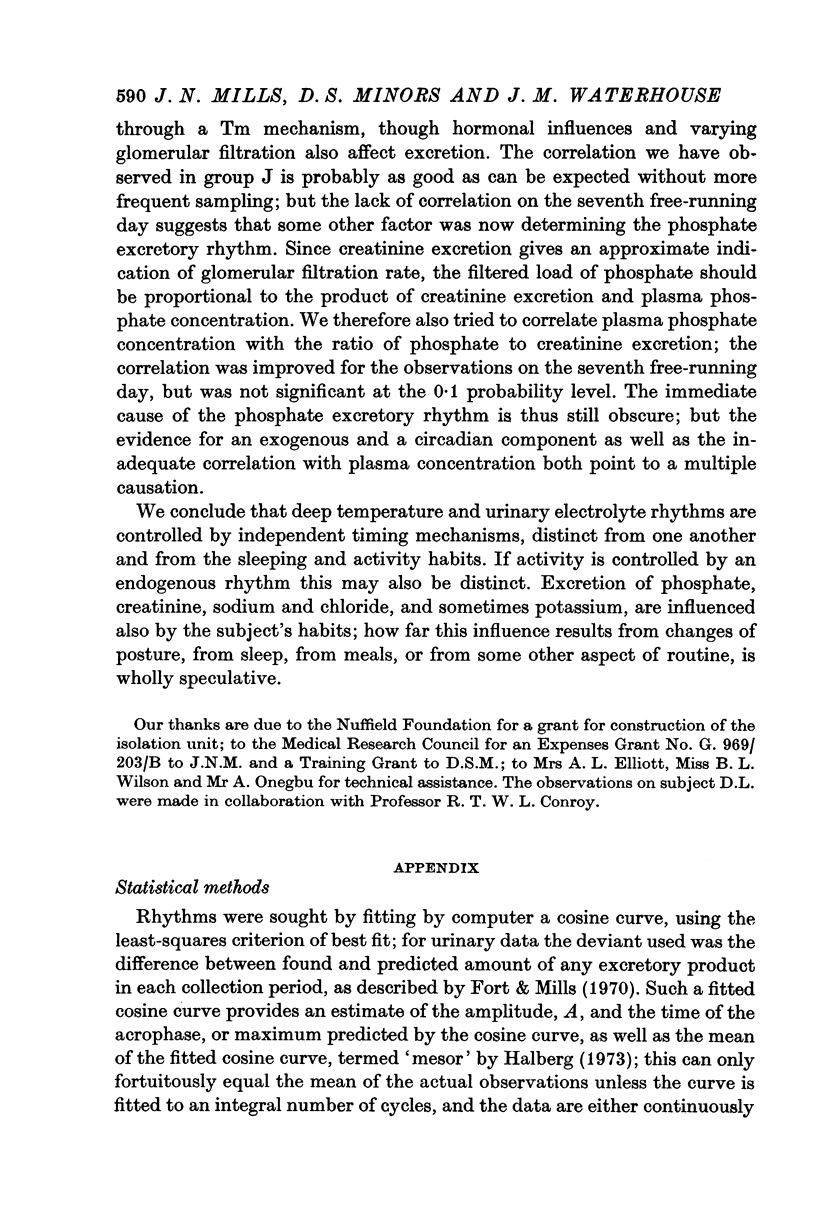
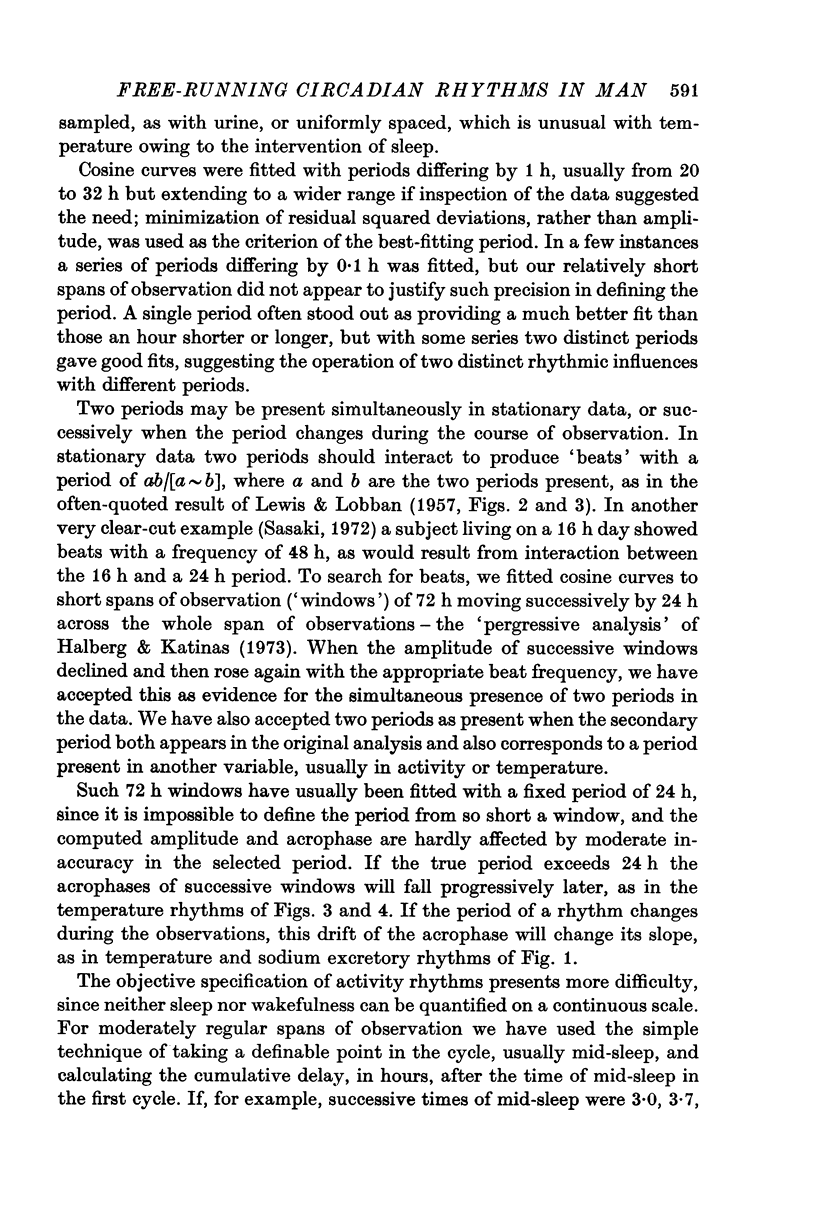
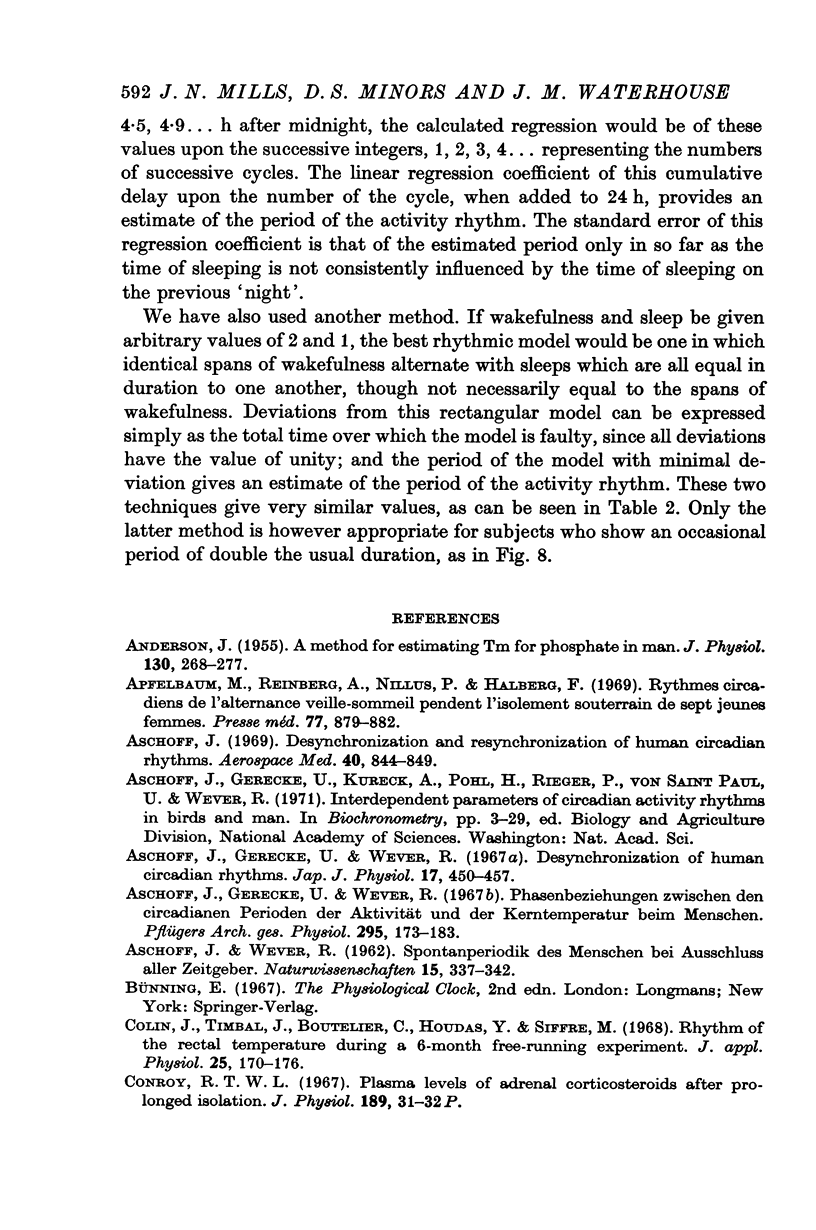
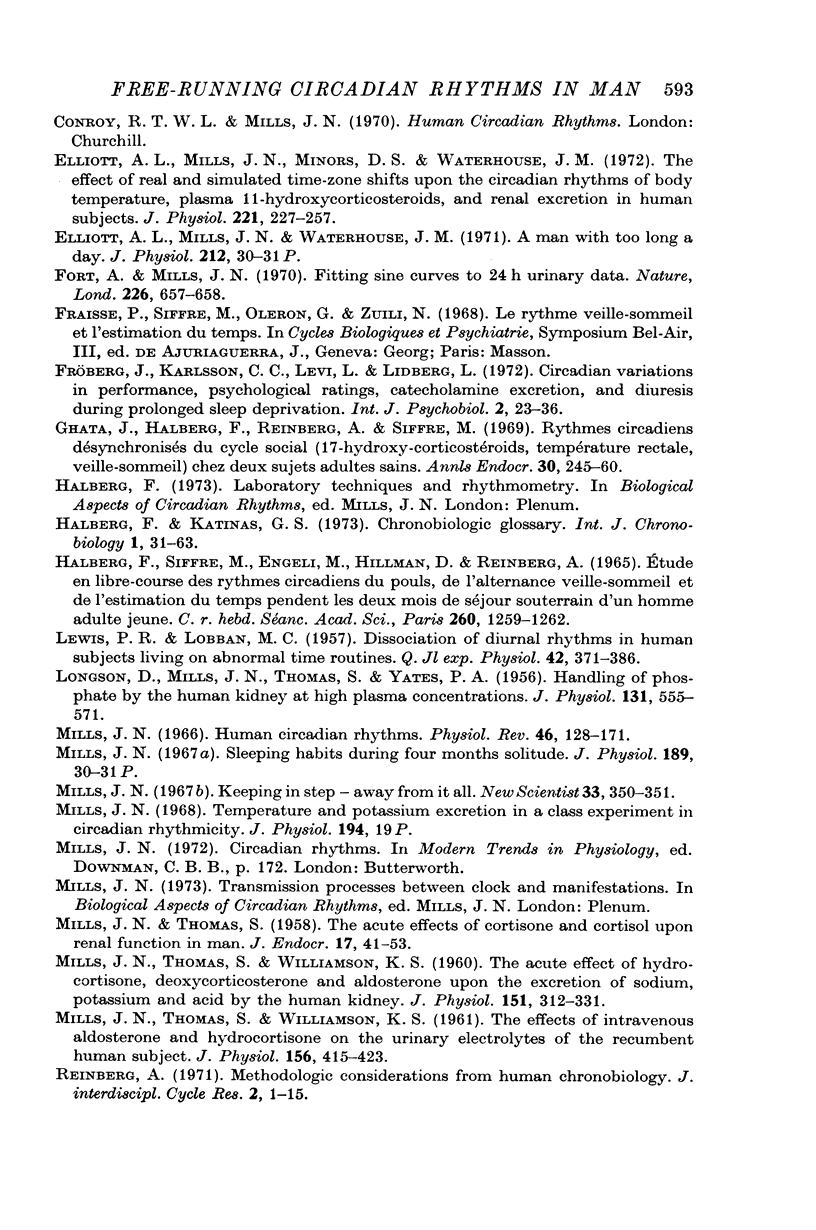
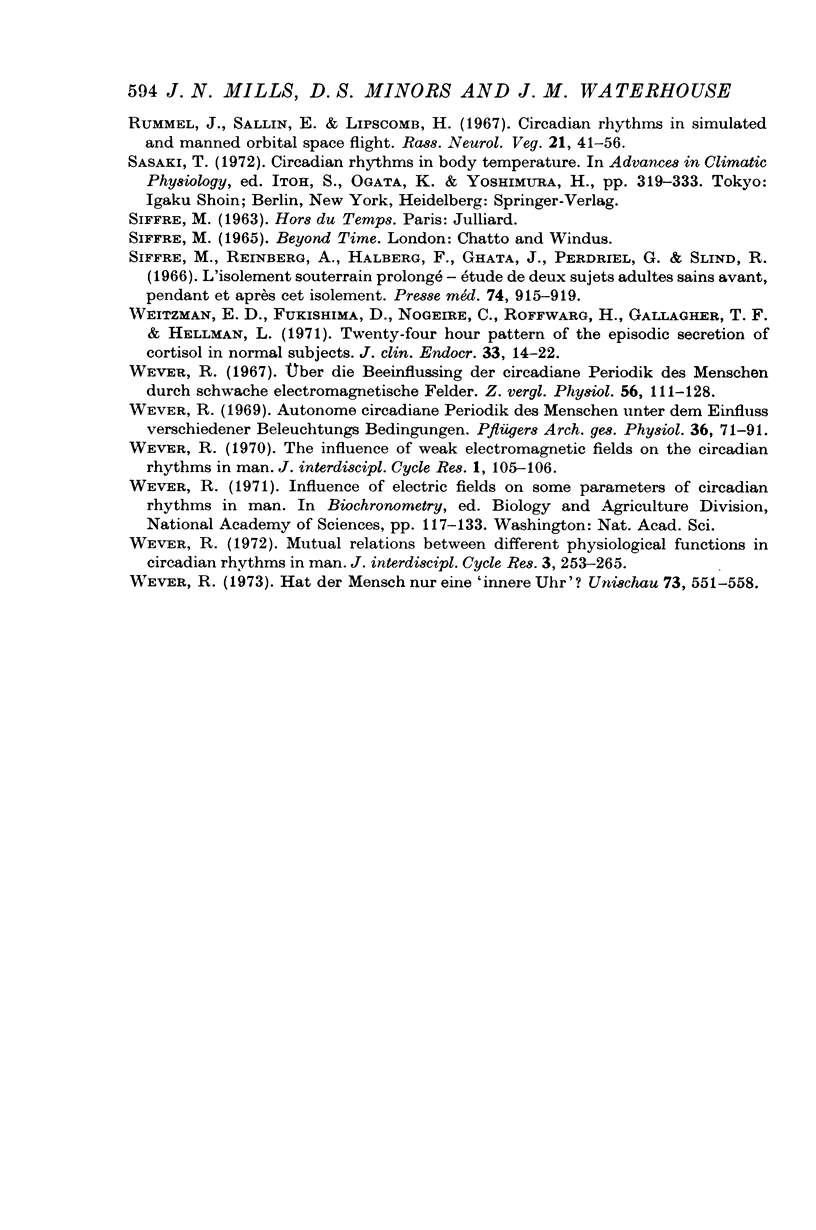
Selected References
These references are in PubMed. This may not be the complete list of references from this article.
- ANDERSON J. A method for estimating Tm for phosphate in man. J Physiol. 1955 Nov 28;130(2):268–277. doi: 10.1113/jphysiol.1955.sp005409. [DOI] [PMC free article] [PubMed] [Google Scholar]
- Apfelbaum M., Reinberg A., Nillus P., Halberg F. Rythmes circadiens de l'alternance veille-sommeil pendant l'isolement souterrain de sept jeunes femmes. Presse Med. 1969 May 17;77(24):879–882. [PubMed] [Google Scholar]
- Aschoff J. Desynchronization and resynchronization of human circadian rhythms. Aerosp Med. 1969 Aug;40(8):844–849. [PubMed] [Google Scholar]
- Aschoff J., Gerecke U., Wever R. Desynchronization of human circadian rhythms. Jpn J Physiol. 1967 Aug 15;17(4):450–457. doi: 10.2170/jjphysiol.17.450. [DOI] [PubMed] [Google Scholar]
- Aschoff J., Gerecke U., Wever R. Phasenbeziehungen zwischen den CIRCADIANEN Perioden der Aktivität und der Kerntemperatur beim Menschen. Pflugers Arch Gesamte Physiol Menschen Tiere. 1967;295(2):173–183. [PubMed] [Google Scholar]
- Colin J., Timbal J., Boutelier C., Houdas Y., Siffre M. Rhythm of the rectal temperature during a 6-month free-running experiment. J Appl Physiol. 1968 Aug;25(2):170–176. doi: 10.1152/jappl.1968.25.2.170. [DOI] [PubMed] [Google Scholar]
- Elliott A. L., Mills J. N., Minors D. S., Waterhouse J. M. The effect of real and simulated time-zone shifts upon the circadian rhythms of body temperature, plasma 11-hydroxycorticosteroids, and renal excretion in human subjects. J Physiol. 1972 Feb;221(1):227–257. doi: 10.1113/jphysiol.1972.sp009750. [DOI] [PMC free article] [PubMed] [Google Scholar]
- Fort A., Mills J. N. Fitting sine curves to 24 h urinary data. Nature. 1970 May 16;226(5246):657–658. doi: 10.1038/226657a0. [DOI] [PubMed] [Google Scholar]
- Ghata J., Halberg F., Reinberg A., Siffre M. Rythmes circadiens désynchronisés du cycle social (17-hydroxycorticostéroïdes, température rectale, veille-sommeil) chez deux sujets adultes sains. Ann Endocrinol (Paris) 1969 Mar-Apr;30(2):245–260. [PubMed] [Google Scholar]
- HALBERG F., SIFFRE M., ENGELI M., HILLMAN D., REINBERG A. ETUDE EN LIBRE-COURS DES RYTHMES CIRCADIENS DU POULS, DE L'ALTERNANCE VEILLE-SOMMEIL ET DE L'ESTIMATION DU TEMPS PENDANT LES DEUX MOIS DE S'EJOUR SOUTERRAIN D'UN HOMME ADULTE JEUNE. C R Hebd Seances Acad Sci. 1965 Jan 25;260:1259–1262. [PubMed] [Google Scholar]
- Halberg F., Katinas G. S. Chronobiologic glossary of the International Society for the Study of Biologic Rhythms. Int J Chronobiol. 1973;1(1):31–63. [PubMed] [Google Scholar]
- LEWIS P. R., LOBBAN M. C. Dissociation of diurnal rhythms in human subjects living on abnormal time routines. Q J Exp Physiol Cogn Med Sci. 1957 Oct;42(4):371–386. doi: 10.1113/expphysiol.1957.sp001281. [DOI] [PubMed] [Google Scholar]
- LONGSON D., MILLS J. N., THOMAS S., YATES P. A. Handling of phosphate by the human kidney at high plasma concentrations. J Physiol. 1956 Mar 28;131(3):555–571. doi: 10.1113/jphysiol.1956.sp005482. [DOI] [PMC free article] [PubMed] [Google Scholar]
- MILLS J. N., THOMAS S. The acute effects of cortisone and cortisol upon renal function in man. J Endocrinol. 1958 May;17(1):41–53. doi: 10.1677/joe.0.0170041. [DOI] [PubMed] [Google Scholar]
- MILLS J. N., THOMAS S., WILLIAMSON K. S. The acute effect of hydrocortisone, deoxycorticosterone and aldosterone upon the excretion of sodium, potassium and acid by the human kidney. J Physiol. 1960 May;151:312–331. doi: 10.1113/jphysiol.1960.sp006440. [DOI] [PMC free article] [PubMed] [Google Scholar]
- MILLS J. N., THOMAS S., WILLIAMSON K. S. The effects of intravenous aldosterone and hydrocortisone on the urinary electrolytes of the recumbent human subject. J Physiol. 1961 May;156:415–423. doi: 10.1113/jphysiol.1961.sp006684. [DOI] [PMC free article] [PubMed] [Google Scholar]
- Mills J. N. Human circadian rhythms. Physiol Rev. 1966 Jan;46(1):128–171. doi: 10.1152/physrev.1966.46.1.128. [DOI] [PubMed] [Google Scholar]
- Rummel J., Sallin E., Lipscomb H. Circadian rhythms in simulated and manned orbital space flight. Rass Neurol Veg. 1967 Apr 30;21(1):41–56. [PubMed] [Google Scholar]
- Siffre M., Reinberg A., Halberg F., Ghata J., Perdriel G., Slind R. L'isolement souterrain prolongé. Etude de deux sujets adultes sains avant, pendant et après cet isolement. Presse Med. 1966 Apr 9;74(18):915–919. [PubMed] [Google Scholar]
- Weitzman E. D., Fukushima D., Nogeire C., Roffwarg H., Gallagher T. F., Hellman L. Twenty-four hour pattern of the episodic secretion of cortisol in normal subjects. J Clin Endocrinol Metab. 1971 Jul;33(1):14–22. doi: 10.1210/jcem-33-1-14. [DOI] [PubMed] [Google Scholar]
- Wever R. Autonome circadiane Periodik des Menschen unter dem Einfluss verschiedener Beleuchtungs-Bedingungen. Pflugers Arch. 1969;306(1):71–91. doi: 10.1007/BF00586612. [DOI] [PubMed] [Google Scholar]


